16 Poignant Photos Show What A Domestic Violence Shelter Really Looks Like
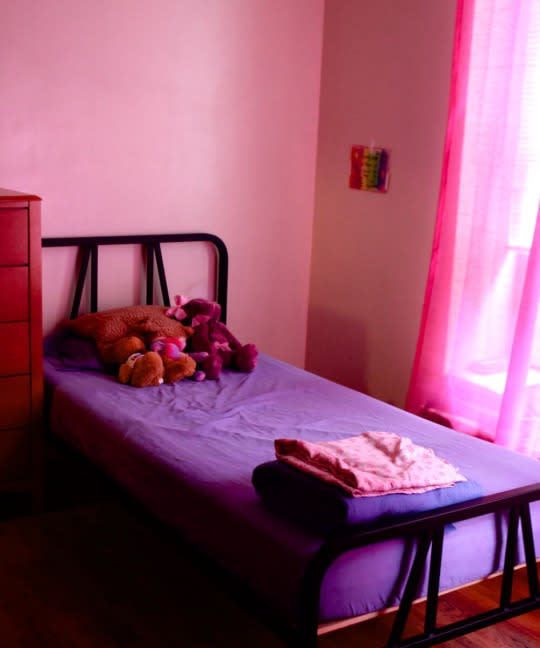
PHOTOGRAPHS BY JESSICA DIMMOCK/VII.
October is Domestic Violence Awareness Month, and Refinery29 has partnered with Safe Horizon to bring our readers real stories from domestic violence survivors and their advocates. Ahead, we visit two of its New York City shelters. Survivors’ names have been changed for their safety.
In conversations around domestic violence, a “shelter” so often becomes an abstract symbol — of both desperation and optimism, of the last resort and a fresh start — that we forget it’s also a physical setting where survivors of abuse sleep, eat, talk, work, play, and heal. What’s more, for the safety of those who live in them, shelters are often unidentifiable from the outside and inaccessible to people who don’t need their services.
To shed light on these spaces, Safe Horizon — the largest provider of domestic violence shelter in the country — invited us into two of its shelters, Lotus House and Rose House, to meet staff members and speak with Terrance and Gabriela, two of the 2,200 survivors the organization has housed over the past year. Terrance, 45, escaped an abusive relationship in September of 2014 and has been living at Lotus House for what he calls “a fascinating, wonderful year.” Gabriela, 33, an undocumented immigrant from Guatemala, is staying with her two daughters at Rose House after 13 years with a financially abusive husband who blocked her path to citizenship. (Her interview has been translated from Spanish.) Their stories weave together both devastation and hope.
Related: 30 Photos Of Unretouched Butts, In Case You Forgot What They Really Look Like
On the supply side, it’s a challenging moment for those working to put roofs over the heads of those fleeing from domestic violence. “Because of the housing and homeless crisis in New York City, folks are staying longer in our shelters than they have in years in the past,” explains Kelly Coyne, Safe Horizon’s Vice President of Domestic Violence Shelters. “Finding an affordable place is usually top on the [list of] things that survivors are worried about…[and] they have to navigate figuring out new childcare opportunities, all while worrying about safety and [how] this person who was supposed to love them is the person trying to hurt them.” Mayor Bill de Blasio’s administration is moving to address the need for more safe space, pledging $15 million last month to fund shelter beds and transitional apartments specifically for New York City’s abuse survivors.
Throughout shelters in all five boroughs of New York City, Safe Horizon currently offers some 700 beds. It also provides meals, support groups, one-on-one counseling, and educational and recreational activities for those who come through its doors, over half of whom are children. “We have an amazing liaison with the Department of Education,” Rose House director Olga Rodriguez tells us. “It’s really important to foster good relationships with community providers. We have a cooking class here with a chef that comes for eight weeks at a time and they do cooking with the kids, and a teacher’s aide is going to come and do tutoring with the kids four times a week.”
Related: 25 Real Photos Of Women’s Breasts (NSFW)
Throughout its programming, Safe Horizon emphasizes opportunities rather than directives. “The clients are the experts in their own lives,” Lotus House’s director Jennifer Elcock says. “We really support the things that they want to do instead of imposing, ‘Oh, well, I’m the expert, I’m the social worker, and this is what you should do.’ Effective listening is about 'So, what do you wanna do, how do you want us to support you as well?’”
The stories of Gabriela and Terrance, the survivors with whom we spoke, echo this theme of support. Click through to view 16 poignant photos taken inside Safe Horizon’s shelters and read about Gabriela’s and Terrance’s experiences, in their own words.
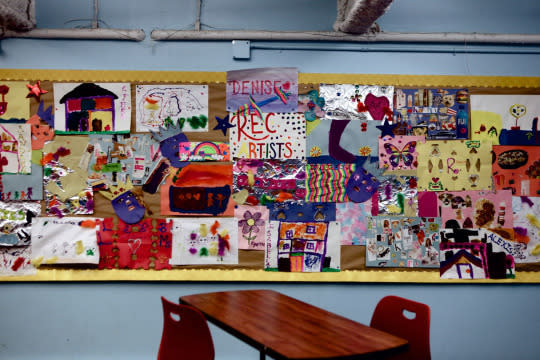
Terrance: “I was in a domestic violence relationship for some time, and I mustered up enough strength to leave the relationship in September of last year. Leaving my abusive partner was a long, slow process.
"You know, I have this thing where I love. I love very hard. And the gay community, at least for me, when you find someone and they place you way up here, you know, place you high on a pedestal when your life is already in turmoil, it was everything. Growing up in Harlem, coming from a-well-to-do family, certain things were just not done. It’s not okay, according to my family, to be gay. It was just totally unacceptable. When I thought that I found love, I embraced it immediately.”
Related: What Losing 110 Pounds REALLY Looks Like
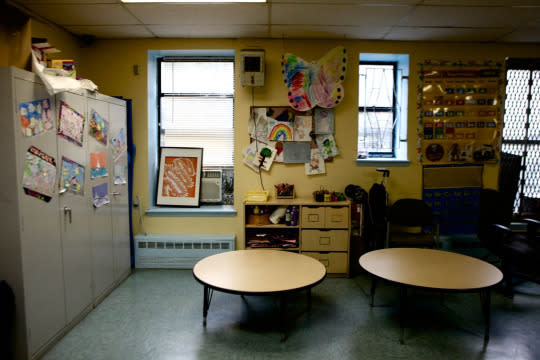
Terrance: “And I always made an excuse along the way for all the abuse, that things would get better. And when the final straw was beating me up, stealing my money, I just was like, ‘No more. I can’t do this no more.’
"It was very secretive. I had isolated myself from family and friends, so it was just a one-on-one, nobody knows. I went through the whole thing of being ashamed, embarrassed, angry, all the emotions that you could possibly imagine. At that time, I was so blind I didn’t even look at it as abuse. Not all incidents were physical — it was verbal assassinations and I found my self-esteem just being lowered, you know?”
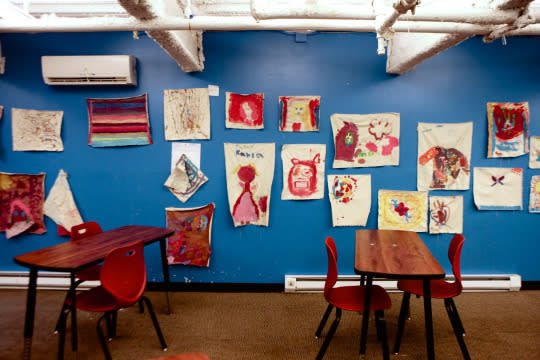
Terrance: “I was unaware of any safe haven such as Lotus House at the time, so I sought out shelter from friends and family…One or two people were aware of the incident and the gentleman that was abusing me, so they were reluctant to really let me stay with them.
"One friend out here in Brooklyn decided to let me stay for a few weeks and was suggesting, ‘Look, you’ve got to do something. I just don’t want you here’ — because the inner circles of the gentleman and I were pretty much the same. So he knew people that I possibly would have contacted and they felt threatened. They felt that I was putting their life in jeopardy.”
Related: The True Story Of Eyebrow Transplants
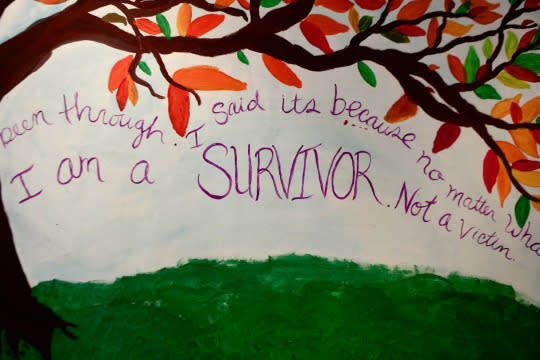
Terrance: “I went on to spend time in two different shelters, where I was very sad, very depressed, hurting a lot. I was seeking out someone to talk to. I needed counseling. I was trying to inform them, ‘Look, here’s my order of protection. I’m a domestic violence victim. I need something a little more where I can be alone.’ And it was suggested to me, I believe by one of the counselors, ‘Well, maybe you can call Safe Horizon.’
Related: This 30-Day Upper-Body Challenge Will Transform Your Arms & Shoulders
"The residential specialist was very compassionate over the phone, very patient with me. Lo and behold, she called me back, said they had space, and I could come in. I believe my date of entry was November 14, 2014. Yes, so it’s stumbling up across a year. A year, a fascinating, wonderful year for me. Yes. When I got here I was already grateful and so thankful.”
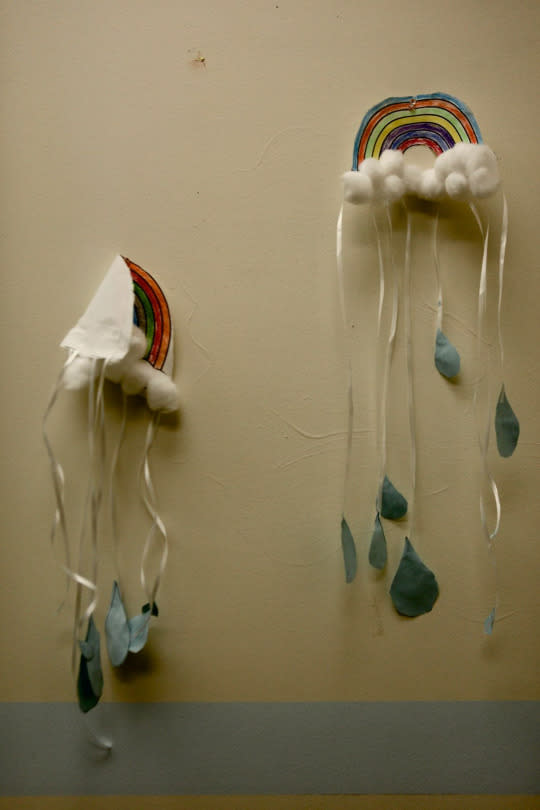
Terrance: “The staff was incredible. Like I said, very patient. I was assigned a case manager and a social worker and then my journey pretty much began from there. Coming to Lotus House, it’s been such a positive atmosphere. We have DV groups, we sit, and we talk. But they have become my family, more or less.”
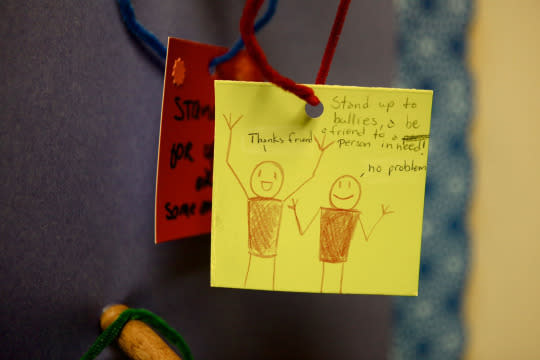
Terrance: “The most sentimental place in the building is the director Jennifer Elcock’s office. She’s director, but she’s also like my mom. Her door is always open — [like,] ‘You need something? I’m available.’ And that was amazing for me just to have one person care and feel confident that I could trust, I can tell about my life. I feel safe.”
Related: The Secret To The Perfect Plank
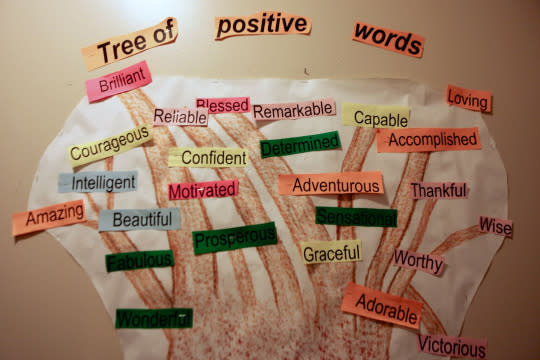
Terrance: “One-on-one counseling with case managers and social workers that they have here, they are my cheerleading force. So I walk now with my head up high, pretty much. Now the confidence is back somewhere. I’m looking for a place to stay. That’s pretty tough right now, you know, the processing, but I have hope. I have faith. I’m very prayerful. I like to meditate. I like to read.”
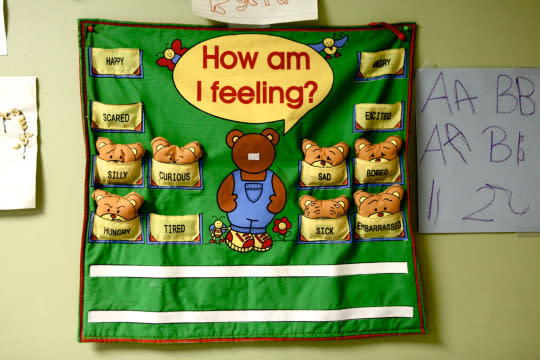
Terrance: “You just don’t see a lot of publicity or anything saying, ‘Listen victims, we have somewhere for you to go.’ My ordeal went through shelters and experiencing each step of the way I kept saying, ‘Listen, I need help. It’s bigger than just me being homeless. I need someone to talk to.’ I was crying inside…in a really rocky space financially, no money, no friends, no one to talk to, and afraid. I didn’t know where this guy is gonna find me. I don’t wish it upon anyone.”
Related: 4 Crazy Makeup Hacks You Need To Learn Now
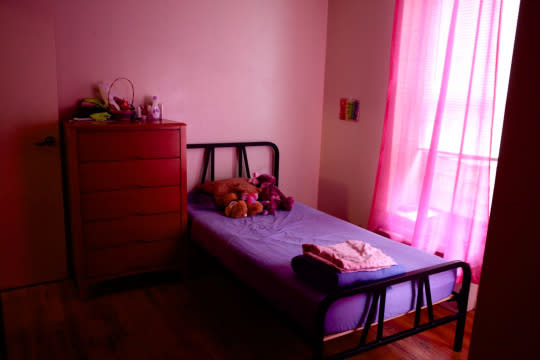
Gabriela: “I’ve been here for six months. Before that, I lived in an emergency shelter for three months. When I went to the emergency shelter, I had been living with my husband in a Bronx apartment. My husband is 23 years older than me. I came with him from Guatemala in 2000. He kicked me out of the out of the house and he said that he was gonna go to court and claim full custody of the children. He stated that because he was a U.S. citizen and I am undocumented, he was gonna take the kids and I would not be able to have them.”
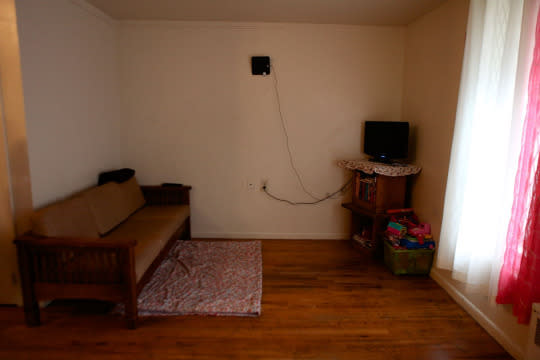
Gabriela: “We dated for six years. After six years, we were married for nine years, legally. When we were married, he would always start the process for me to gain citizenship, but never completed it, because he said once I became a resident I would leave him.”
Related: All The Boob Questions You Were Afraid To Ask, ANSWERED
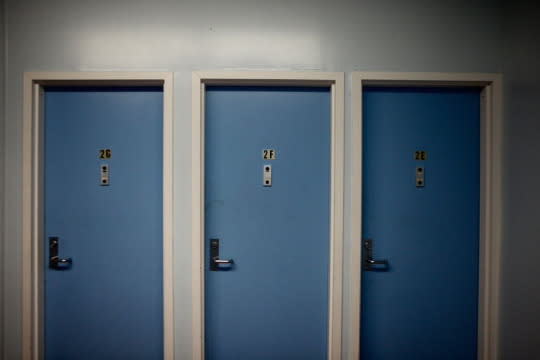
Gabriela: “He was a U.S. citizen. He’s always been a U.S. citizen. When we met in Guatemala, he was a different person. Since coming to the United States, he changed. The only time I’ve had to see him over the past year was in court — we’ve been in a child custody battle for over a year. It just ended three weeks ago. I was granted full custody.”
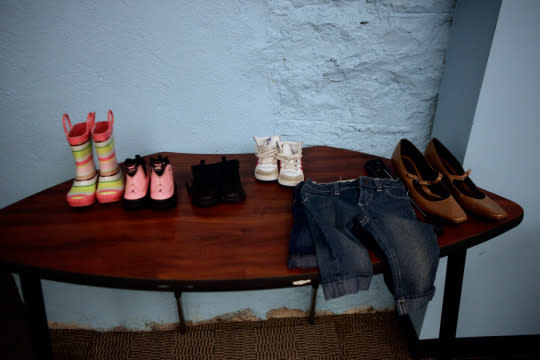
Gabriela: “I never suffered physical violence — it was always verbal, emotional, and financial. I never sought help, because I never experienced physical violence, so I felt like I wasn’t experiencing domestic violence. I didn’t work when I was in that relationship — the only money was coming from him. I always had to ask for money. For instance, if we were out of toilet paper, I would have to go and ask him and say, ‘There’s no toilet paper.’ So he would give me money, but I would have to provide a receipt to him at the end.”
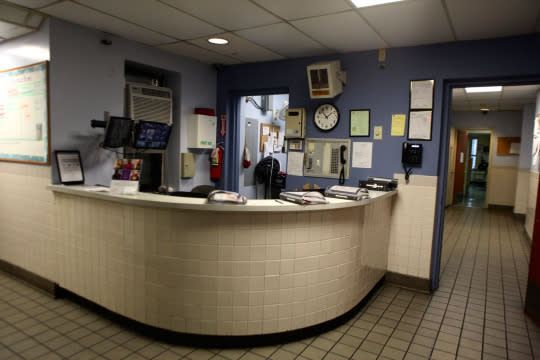
Gabriela: “After I left, he tried to get me to come back. He contacted my family in Guatemala — my family didn’t know what had happened, but he called them and told them that we had suffered some issues in the relationship and he spoke to my father. But my dad said he knew I wouldn’t have left if it wasn’t something big.”
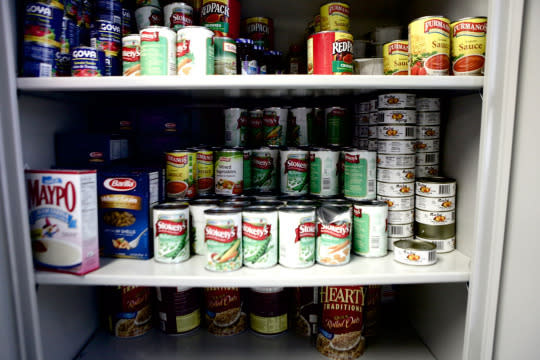
Gabriela: “I’m trying to get documentation. My being undocumented gave power to my husband. He would constantly remind me of how little resources I had and he would always mock me by saying, ‘Buy a Social Security card, buy an ID. because you’ll never get one.’ I was aware that I had very limited resources. For even paying the electricity bill you need some form of identification, so I felt powerless.”
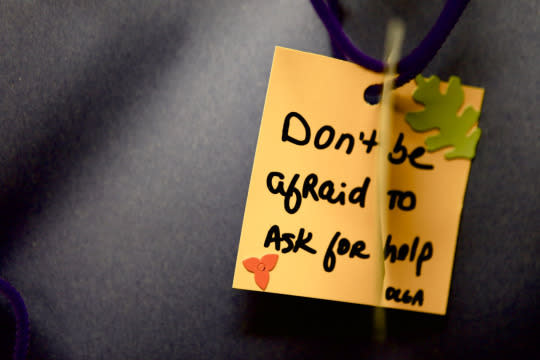
Gabriela: “Right now, I’m not working. My immigration attorney suggested that I just wait. I’ve received a work permit, but I’m waiting for it to arrive from the mail. I’ve been looking, actively searching for employment — it’s just essential to provide basic needs — but I’m also keeping in mind what the immigration attorney suggested, to just have patience.”
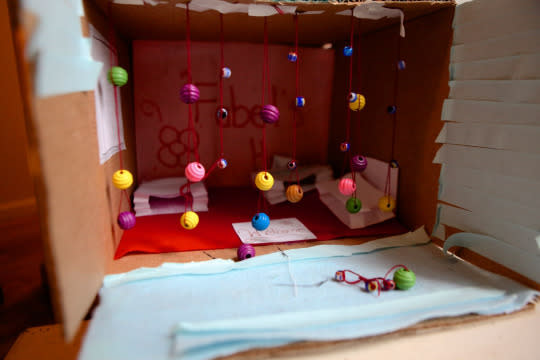
Gabriela: “My kids have helped me so much in this process. I had never seen them run and jump and play like they did when we first arrived at the first shelter we were at. I found a lot of support in my church community. They’ve helped and they’ve helped my three girls.
"To women who are undocumented and in an abusive situation, I would say to look for help, because there is someone to help. You may feel like you’re alone and you have nowhere to go, but there are people, there are places that will help you. My husband used to tell me not talk to people, because, ‘Everybody is bad — you don’t know what their intentions are.’ But now, I have friends at the shelter, at my church, and at my children’s schools. Now, I can go up to another mom and just talk to them. I feel at ease.”
Safe Horizon’s #PutTheNailinIt campaign asks men and women to support victims of abuse and take a stand against domestic violence. Join the campaign by donating at safehorizon.org; then, paint your left ring fingernail purple — use the hashtag #PutTheNailinIt to show your vow to end domestic violence.
[Ed. note: Gabriela’s daughter created this diagram of her future dream house, featuring a pool.]
By Haley MacMillen
